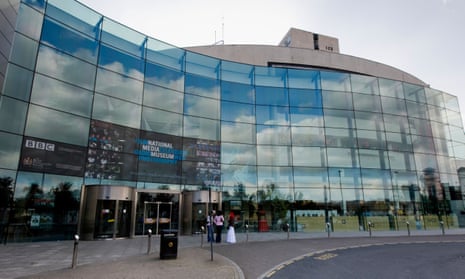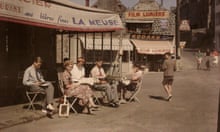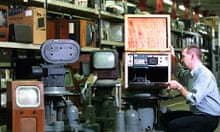The row over the decision to move a world-famous photography collection from the National Media Museum in Bradford has intensified, with a local MP criticising the “great and the good in London” for pushing ahead without consulting anyone in the city.
The decision to transfer the collection to the Victoria and Albert Museum in Kensington was discussed by NMM’s parent Science Museum Group’s trustees nearly a year ago, according to minutes of a meeting seen by the Guardian, but it became public only last week.
Two Bradford MPs have demanded the transfer of 400,000 objects from the Royal Photographic Society (RPS) collection be halted.
Judith Cummins, Labour MP for Bradford South, said: “I was shocked to learn that the decision to transfer the world-renowned Royal Photographic Society collection, the abandoning of the international film festival and the move to rename the museum were all made over 200 miles away in London.
“Not a single person on the board of trustees has links to Bradford, or indeed the wider region. We cannot have decisions about our city and our region being made by the ‘great and the good’ in London.”
Minutes of Science Museum Group board meetingshow that the process of moving the RPS collection was well under way by March last year and proposals to “re-vision” the National Media Museum began as long ago as September 2013.
Trustees were recorded as saying on 4 March 2015: “The collections moves might be seen as removing the ‘best’ part from Bradford to London, but also offered opportunities to shine a light on equally important, but less well-known, elements.”
At the same meeting, trustees discussed changing the museum’s name. The Guardian has since learned that Science Museum North is one of the names under consideration.
The minutes do not say which new name the trustees discussed, but add: “The suggested name made no reference to the museum’s content, nor ‘national’ status, but the SM name had the potential to attract significant funding and was flexible enough to cover a range of topics. Local consultation was essential.”
Cummins said the first she heard about the collection move was on 27 January – nearly a year after the board of trustees meeting.
The quarterly meeting, held at the Science Museum in South Kensington, London, was attended by nine trustees, none of whom had connections to Bradford or the media. It was chaired by Dame Mary Archer, a scientist specialising in solar power conversion, and included Simon Linnett, executive vice-chairman of financial advisory giant Rothschild, the Labour peer Lord Faulkner, Prof Averil Macdonald, chair of UK Onshore Oil and Gas, and Dr Gill Samuels, the scientist credited with inventing Viagra.
The row over the loss of the collection – described by a Bradford political leader as “an appalling act of cultural vandalism” – looks unlikely to die down despite a lengthy statement explaining the move by Jo Quinton-Tulloch, the National Media Museum director, on Friday.
At a “full and frank” meeting with Quinton-Tulloch on Friday, Cummins and Bradford East MP Imran Hussain demanded the museum stop the transfer of the RPS collection, reconsider its decision to abandon the Bradford international film festival, and keep the National Media Museum name.
Quinton-Tulloch is said to have agreed to take these demands back to the Science Museum Group board and provide a written response. She wrote after the meeting: “The decision to transfer the Royal Photographic Society collection – as well as some other photography holdings that can broadly be described as ‘art photography’ – came from two powerful motives: firstly, the need to focus our activity and our limited resources on those areas of our collection that can best help us explore the science and technology of light and sound and secondly to ensure that those collections that don’t directly help us to do that – like the RPS collection – find a home where they can be accessed and enjoyed by the public and researchers alike.
“The RPS collection is a treasure trove of its kind – and a wonderful public asset for the UK. I believe its transfer secures the best future for that collection, as well as helping to secure the long-term future of this museum.”
Formerly head of exhibitions at the Science Museum, Quinton-Tulloch was appointed in May 2012 with a mandate to overhaul the then struggling National Media Museum by Ian Blatchford, the director and chief executive of the Science Museum Group, who was formerly deputy director of the V&A.
The move has reignited fears about the long-term future of the National Media Museum, which came close to closure in 2013.









Comments (…)
Sign in or create your Guardian account to join the discussion